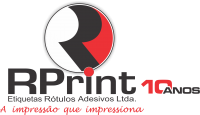When one company transacts with another on credit, one will record an entry to accounts payable on their books while the other records an entry to accounts receivable. Although some people use the phrases “accounts payable” and “trade payables” interchangeably, the phrases refer to similar but slightly different situations. Trade payables constitute the money a company owes its vendors for inventory-related goods, such as business supplies or materials that are part of the inventory. In order to effectively manage cash flow and maintain good relationships with vendors, it’s important to measure AP regularly. You can use this ratio to calculate a company’s short-term liquidity by measuring how quickly it pays off its vendors. “Accounts Payable” refers to money a company owes its vendors for goods or services they purchased on credit.
Vendor payments
Business equipment refers broadly to anything you need to conduct normal business operations. This includes your physical equipment and assets, such as business software. Technically, purchasing and general maintenance costs will be included in your equipment costs.
On the other hand, managing AR is essential for improving cash flow, ensuring timely customer payments, and reducing bad debt expenses. Efficiently managing accounts payable helps businesses build strong relationships with vendors and suppliers while maintaining positive cash flow. Accounts payable and accounts receivable are often confusing and need to be clarified. According to a report, up to 43% of businesses face challenges due to slow or inefficient invoicing systems, which impacts their ability to handle AP and AR effectively. Even now, only 5% of accounts payable (AP) teams have fully automated their processes for managing invoices and payments.
Standardized Processes
The exact type of raw materials that appear on your balance sheet may vary by your industry and even your business model. You’ll find your accounts payables listed on your company’s balance sheet under current liabilities. In fact, some accounting professionals even refer to these costs as the “current liability account.” In a company, an AP department is responsible for making payments owed by the company to suppliers and other creditors. All outstanding payments due to vendors are recorded in accounts payable.
To conserve cash, you may want to take more time before you pay invoices. If most of your invoices are due within 30 days, you can delay payment until you collect more money from customers. Automation ensures that data is accurately captured and processed, minimizing mistakes that can occur with manual handling. This leads to more reliable financial records and fewer discrepancies to resolve. Delaying the payments for a few days would help Walmart Inc to hold more cash to eventually pay to its suppliers.
What is an AP workflow?
All businesses should use accrual accounting so that revenue can be matched with expenses, regardless of the timing of cash flows. If you are using manual accounting software, then you will have to review the due date of each of the invoices, so you know which bookkeeping in worcester invoices are due for payment. Once you’ve reviewed all the invoices, the next step is to process those payments. If your vendors create and send invoices using an invoicing software, then the invoice details will get uploaded to your accounting software automatically.
Save 50% of time spent on AP with BILL*
AP encompasses any amount of money a company owes besides payroll, including goods or services purchased, software subscriptions, logistics, late fees, or office utility bills. The accounts payable department also works to reduce costs by developing strategies to save a business money. For example, paying an invoice within a discount period that many vendors provide. Receivables represent funds owed to the firm for services rendered and are booked as an asset. Accounts payable, on the other hand, represent funds that the firm owes to others and are considered a type of accrual.
Efficient handling of accounts payable and receivable not only improves cash flow but also strengthens supplier and customer relationships, contributing to long-term business success. Companies mostly find it convenient to record an accounts payable liability when they actually receive the goods. However, in certain situations, the title to goods passes to the buyer before the physical delivery is taken by him. In such situations, the liability should be recorded at the time of passage of title.
- Since these payments are expected to be received within the next few months, they are listed on your balance sheet as assets that will soon convert into cash.
- In case of late payments, the finance team may send a reminder with the original invoice, including any applicable late fees.
- In some companies, one specific accountant may be responsible for all accounts payable.
This means while you’re receiving a discount on your accounts payable, you can give a discount on your accounts receivable to customers that make early payments. You can calculate the accounts payable by generating accounts payable aging summary report, if you are using QuickBooks Online pitching Accounting Software. This report provides a summary of all the accounts payable balances, and also lets you know about the balances that are overdue for payment. It is important to note that the accounts payable category represents the short-term obligations of your business. Meaning it represents the aggregate amount of short-term obligations that you have towards suppliers of goods or services.
Thus, an increase in accounts payable balance would signify that your business did not pay for all the expenses. Accounts payable is a general ledger account that showcases the amount of money that you owe to your creditors/suppliers. If yo receive an invoice mentioning the payment terms from your supplier, it then gets recorded in your accounts payable ledger. Since you’ve purchased goods on credit, the accounts payable is recorded as a current liability on your company’s balance sheet. Building trustworthy and strong relationships with suppliers are essential, because it’ll help you to receive goods on better credit terms from your vendors. Naturally, only some businesses will require the purchase of raw materials.
